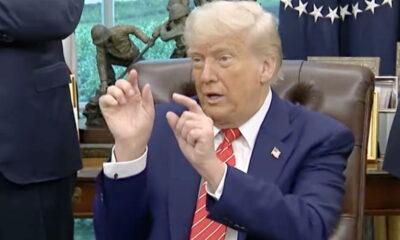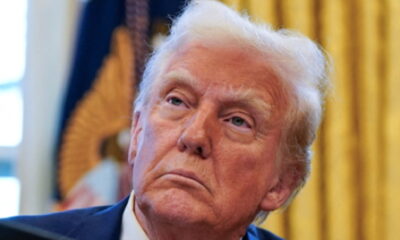Much of President Donald Trump’s rhetoric about his on-again/off-again tariff plan is based around the idea that the U.S. is in a trade deficit with many countries around the world. But a deficit isn’t always a bad thing.
On Monday, the White House released a new statement that the U.S. and China had come to an agreement to lower tariffs. Earlier this year, Trump had proposed a 145% tariff against China, and the country retaliated with a proposed 125% tariff on U.S. goods. The new plan sees the tariffs drastically lowered to 30% on imported Chinese goods and 10% on American goods imported into China. The new deal is temporary, lasting 90 days.
“For too long, unfair trade practices and America’s massive trade deficit with China have fueled the offshoring of American jobs and the decline of our manufacturing sector,” the White House said in a statement.
READ MORE: Walz Mocks Trump Not Knowing ‘How a Tariff Works’ as Companies Ready ‘Massive’ Price Hikes
Earlier this year, Trump characterized the United States’ trade deficit with Canada as subsidizing our neighbors to the north. But a trade deficit is just a gap between the amount of goods and services exported and imported to and from a country. For example, the U.S. imports $412.7 billion of goods from Canada while exporting $349.4 billion. While that might look like a $63.3 trade deficit, that doesn’t take into account money coming in the services sector, so our trade deficit with Canada is actually $35.7 billion.
The U.S. has a trade surplus with some countries, too. Brazil buys a lot of energy resources from the U.S., according to the New York Times, but doesn’t sell nearly as many other goods and services back to the states.
The concept of trade deficits and surpluses is wholly neutral—and in fact, a trade deficit can be a good thing.
“America is getting more cheap goods, and in return it is giving foreigners financial assets: dollars issued by the Federal Reserve, bonds from the US government and American corporations, and stocks in newly created firms,” Tarek Alexander Hassan, a professor of economics at Boston University, wrote. “That is, a trade deficit can only arise if foreigners invest more in the US than Americans invest abroad.”
But, of course, sometimes trade deficits can be problematic for a country. If a country has a very large trade deficit for a long time, that can make it more susceptible to the winds of change, according to Jason Furman, who served on the White House Council of Economic Advisors during President Barack Obama’s second term. But, as Furman told NPR, that doesn’t apply to the United States.
Furman also pointed out that while tariffs can be a useful thing, Trump’s tariffs in particular are not.
“Let’s say you wanted to use trade policy to bring manufacturing jobs back. You wouldn’t do what the president just did, which is to put tariffs on all the bananas, mangoes, avocados and coffee coming into the United States. Those just aren’t things that we’re really ever going to make at enormous scale,” he said. “Moreover, the types of things that they do in Vietnam – you know, making clothing, making shoes – that’s not the jobs that we should be aspiring to have in the United States. We don’t want to give up jobs making airplanes in order to have more jobs making shoes.”
Featured image via Reuters




















